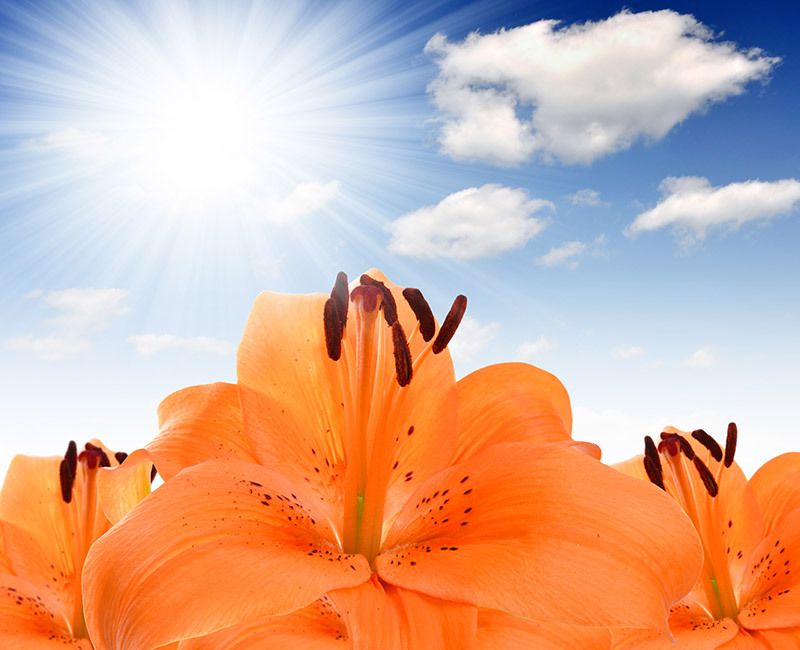Harness the magic of hydrangeas with these care tips
Posted on 13/08/2025
Harness the Magic of Hydrangeas with These Care Tips
Hydrangeas have charmed gardeners worldwide with their lush blooms, poetic colors, and remarkable versatility. Whether you're a novice seeking to start your first flower bed or a seasoned gardening enthusiast, understanding the art of hydrangea care is essential to unlock their full potential. In this comprehensive guide, you'll discover how to harness the magic of hydrangeas and keep your garden brimming with vibrant life season after season.
Why Hydrangeas Are a Gardener's Dream
Hydrangeas are revered for their stunning blossoms and ease of care, making them perfect for gardens, borders, and even container arrangements. With flowers that range from snowy whites to radiant blues and passionate pinks--sometimes even on the same bush!--they offer a symphony of color you can tailor to your taste.
- Season-long blooms add beauty from late spring through fall.
- Easy propagation for expanding your floral displays.
- Unique color control lets you change bloom colors by adjusting soil pH (for some species).
- Wildlife friendly--hydrangeas attract butterflies, bees, and other beneficial pollinators.

Understanding Hydrangea Varieties
Before delving into hydrangea care tips, get to know the most popular varieties you'll encounter in gardens:
1. Bigleaf Hydrangea (Hydrangea macrophylla)
Known for classic mophead and lacecap blossoms, these are the colorful showstoppers many garden enthusiasts desire. Their bloom color can shift with soil pH--acidic soils produce blue hydrangea flowers, while alkaline soils make them pink.
2. Panicle Hydrangea (Hydrangea paniculata)
These hydrangeas offer dramatic cone-shaped flowers and can tolerate more sun than other types. They bloom white or green, maturing to pink or even red hues as the season progresses.
3. Smooth Hydrangea (Hydrangea arborescens)
Popular in North America, these robust shrubs produce large ball-shaped clusters, often pure white or soft green. They're known for their reliability and winter hardiness.
4. Oakleaf Hydrangea (Hydrangea quercifolia)
Famed for their striking, lobed leaves that turn fiery shades in autumn, oakleaf hydrangeas offer not only charming blooms but also year-round interest.
Essential Hydrangea Care Tips
Harnessing the magic of hydrangeas starts with the basics of planting, watering, pruning, and feeding. Follow these expert care recommendations to ensure your hydrangeas thrive:
1. Choosing the Perfect Spot
- Morning Sun, Afternoon Shade: Most hydrangea varieties flourish in sites that receive direct sunlight in the morning and gentle shade in the afternoon.
- Protection from Harsh Winds: Plant them near walls or other shrubs to shield delicate blooms from strong gusts.
- Well-draining Soil: Hydrangeas loathe soggy roots. Amend clay-heavy soils to improve drainage and structure.
2. Planting Hydrangeas the Right Way
- Timing: Plant in early spring or early fall to allow roots to establish.
- Spacing: Hydrangeas need good air circulation. Space plants according to variety recommendations (generally 3-10 feet apart).
- Planting Depth: Set your hydrangea at the same depth it grew in the nursery pot. Mulch gently, but avoid piling mulch against the stem.
3. Watering Wisdom
- Consistent Moisture: Hydrangeas require moist, not waterlogged, soil. Check soil regularly and water deeply, especially in dry periods.
- Morning Watering: Water early in the day to minimize evaporation and keep foliage healthy.
- Mulching: Use organic mulch to keep roots cool and retain moisture. Refresh mulch annually for best results.
4. Feeding Your Hydrangeas
- Balanced Fertilizer: Apply a slow-release, balanced fertilizer in spring as new growth emerges.
- Avoid Over-Fertilizing: Too much nitrogen promotes leaves over flowers. Follow label directions carefully.
- Special Formulas: To intensify blue hues, use fertilizers for acid-loving plants and supplement with aluminum sulfate if desired.
5. Mastering Pruning Techniques
Proper pruning is vital to keep your hydrangeas healthy, shapely, and full of vivid blooms. Your pruning approach depends on the type of hydrangea:
- Bigleaf Hydrangeas: Prune lightly after flowering to remove spent blooms and weak branches. Never prune in spring--that's when flower buds form!
- Panicle and Smooth Hydrangeas: These bloom on new wood. Cut back in late winter or early spring to encourage robust growth and bigger flowers.
- Oakleaf Hydrangeas: Prune after flowering--minimal shaping or removal of old stems is best. Avoid heavy pruning, as excessive cutting leads to fewer blooms next year.
Advanced Hydrangea Magic: Enhancing Color and Health
1. Changing Hydrangea Flower Color
Did you know you can change the color of hydrangea blooms in some species? The secret lies in the soil:
- Blue Blooms: Acidic soil (pH 5.2-5.5) and adding aluminum sulfate produce brilliant blue flowers.
- Pink Blooms: Alkaline soil (pH 6.0-6.2) and adding garden lime will turn blooms pink.
Note: This only applies to Hydrangea macrophylla (Bigleaf) and a few related varieties--white and green-flowering hydrangeas cannot be color-changed.
2. Disease and Pest Prevention
Hydrangeas are generally robust, but they're not immune to trouble. Keep your jewels healthy by watching for:
- Powdery mildew: Appears as a white powder on leaves--prune for airflow and avoid wetting foliage.
- Leaf spots: Reddish or purple spots may appear, especially in humid weather. Remove affected foliage and avoid overcrowding.
- Aphids and spider mites: Wash off small infestations with a gentle water spray or treat with insecticidal soap.
Regular inspection and maintaining good air circulation are key to disease-free hydrangeas.
Seasonal Hydrangea Care Guide
Spring:
- Refresh mulch and check for winter damage.
- Apply balanced fertilizer as new growth appears.
- Begin regular watering as days warm.
Summer:
- Deadhead spent blooms to encourage new flowers--except on oakleaf species.
- Check soil moisture and water as needed, especially during heatwaves.
- Monitor for pests or disease and take prompt action if you spot trouble.
Autumn:
- Reduce watering as growth slows.
- Let old blooms dry on the plant--these can protect the plant in winter and offer rustic beauty.
- Collect leaves and use as mulch or compost after fall cleanup.
Winter:
- In colder climates, provide extra mulch to insulate roots.
- For tender varieties, wrap plants with burlap for wind protection.
- Avoid pruning until next growing season, unless damaged or diseased wood is evident.
Hydrangea Landscaping Ideas
Hydrangeas bring dramatic flair to any garden design.
Here are creative ways to showcase their magic:
- Mass Plantings: Create a dazzling border of "Endless Summer" or "Annabelle" hydrangeas along walkways or fences.
- Mixed Beds: Underplant hydrangeas with hostas, ferns, and astilbe for layered texture and continuous bloom.
- Container Gardens: Dwarf hydrangeas in large pots brighten patios and decks--just ensure regular watering.
- Accent Planting: Spotlight a single panicle hydrangea in the center of a lawn or among evergreens for a focal point.

Frequently Asked Questions About Hydrangea Care
1. Why aren't my hydrangeas flowering?
Several factors can cause this issue:
- Improper pruning, especially on hydrangeas that bloom on old wood.
- Late spring frosts can damage developing buds.
- Excessive shade or over-fertilization with nitrogen-rich products.
2. How can I make my hydrangeas bloom more?
Ensure optimal sunlight (morning sun, afternoon shade), feed with a balanced fertilizer, and prune correctly based on your hydrangea type. Regular deadheading also encourages more blooms in reblooming varieties.
3. Can I grow hydrangeas in pots?
Yes! Choose dwarf varieties or smaller cultivars, use high-quality potting mix, and keep containers moist. Protect potted hydrangeas in winter by moving them to sheltered spots.
Final Thoughts: Unlock Hydrangea Magic in Your Garden
Harnessing the magic of hydrangeas doesn't require wizardry--just a loving hand, the right know-how, and a watchful eye. By mastering these care tips, you'll enjoy abundant blooms and flourishing shrubs that transform your garden into a spellbinding oasis of color and serenity.
Embrace the beauty of hydrangeas with confidence. Experiment with varieties, play with color, and let these enchanting flowers inspire you throughout the seasons. The journey to lush, magical blooms starts today!
Latest Posts
Thriving on Minimalism: Best 10 Office Plants for Busy Lifestyles
Harness the magic of hydrangeas with these care tips
Ensuring Your Poinsettias Survive the Holidays





